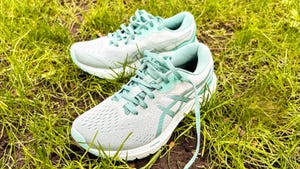The Benefits of Walking and Choosing the Right Shoes
Walking is not only an excellent form of exercise for those looking to avoid high-impact workouts, but it’s also beneficial for overall health. The significance of selecting the appropriate footwear for your walking routine cannot be overstated, just as it is essential to select specifically-designed running or weightlifting shoes. Ideal walking shoes should be tailored for this low-impact activity, ensuring utmost comfort for your feet. When hunting for the best walking shoes for women, it’s vital to consider your walking intensity and your unique gait.
Walking Shoes vs. Casual Shoes
It’s important to differentiate walking shoes from everyday casual footwear. While style might be tempting, choosing a shoe engineered for comfort and safety during walks is critical. Fortunately, there is an array of options available that meet both functional needs and personal fashion preferences.
Evaluating the Best Walking Shoes
Our thorough testing of more than 15 pairs of walking shoes took into consideration various gait patterns and footwear styles to determine the top choices for our list. Remember that individual needs vary greatly, so a shoe that suits one person perfectly may not be the best option for another. Our expert advice below is designed to guide you towards finding a pair of walking shoes that feels personally tailored to your needs.
Expert Insights on Specific Shoe Models
We found specific strengths and weaknesses in the various models tested. The Nike React Phantom Run Flyknit 2 was too narrow and lacked sufficient cushioning despite good arch support. New Balance Fresh Foam Cruzv1 ran small and had a narrow toe box. Athletic Propulsion Labs TechLoom Wave had issues with fit and lacing. Kane Revive Shoe excelled in active recovery but did not fit the walking shoe category as well. Ryka Dauntless Sneaker performed better as a cross-trainer. Rothy’s Original Slip-On Sneaker required a breaking-in period and lacked support for a walking shoe.
Professional Guidance for Shoe Selection
Choosing a walking shoe should extend beyond aesthetics to focus on the correct fit for your feet. According to Pooja Shah, a podiatrist with a diploma from the American Board of Podiatric Medicine, a comprehensive foot evaluation is recommended before purchasing any walking shoe to prevent pain or joint complications. Most individuals benefit from a neutral shoe featuring a deep heel seat and proper heel cushioning without excessive arch support- which can be more harmful than beneficial. Proper shoe sizing is also imperative to prevent balance issues or injuries, while consideration should be given to heel-to-toe drop measurements, shoe flexibility, and upper construction for breathability.
Understanding Gait Types and Their Impact on Footwear
The gait types—overpronator, supinator, or neutral—have distinct implications for choosing walking shoes. Overpronation leads to the inward rolling of the foot and potential flattening of the arch, requiring wider shoes with arch support. Underpronation or supination, characterized by an insufficient inward roll and pressure on the outer toes, necessitates a shoe with a wider toe box. Neutral pronation is when the foot rolls inwards naturally by 15%, making it the “normal” foot strike. Understanding your gait type is crucial as it informs the features you need in a walking shoe, such as shoe width, toe box size, and cushioning.

